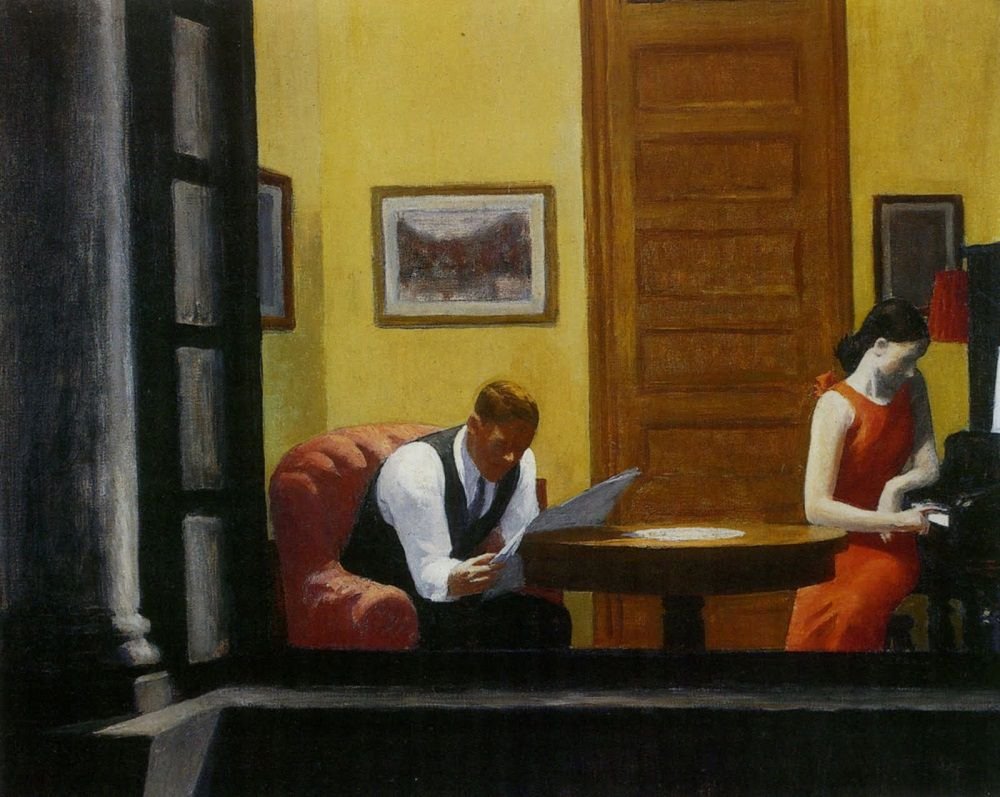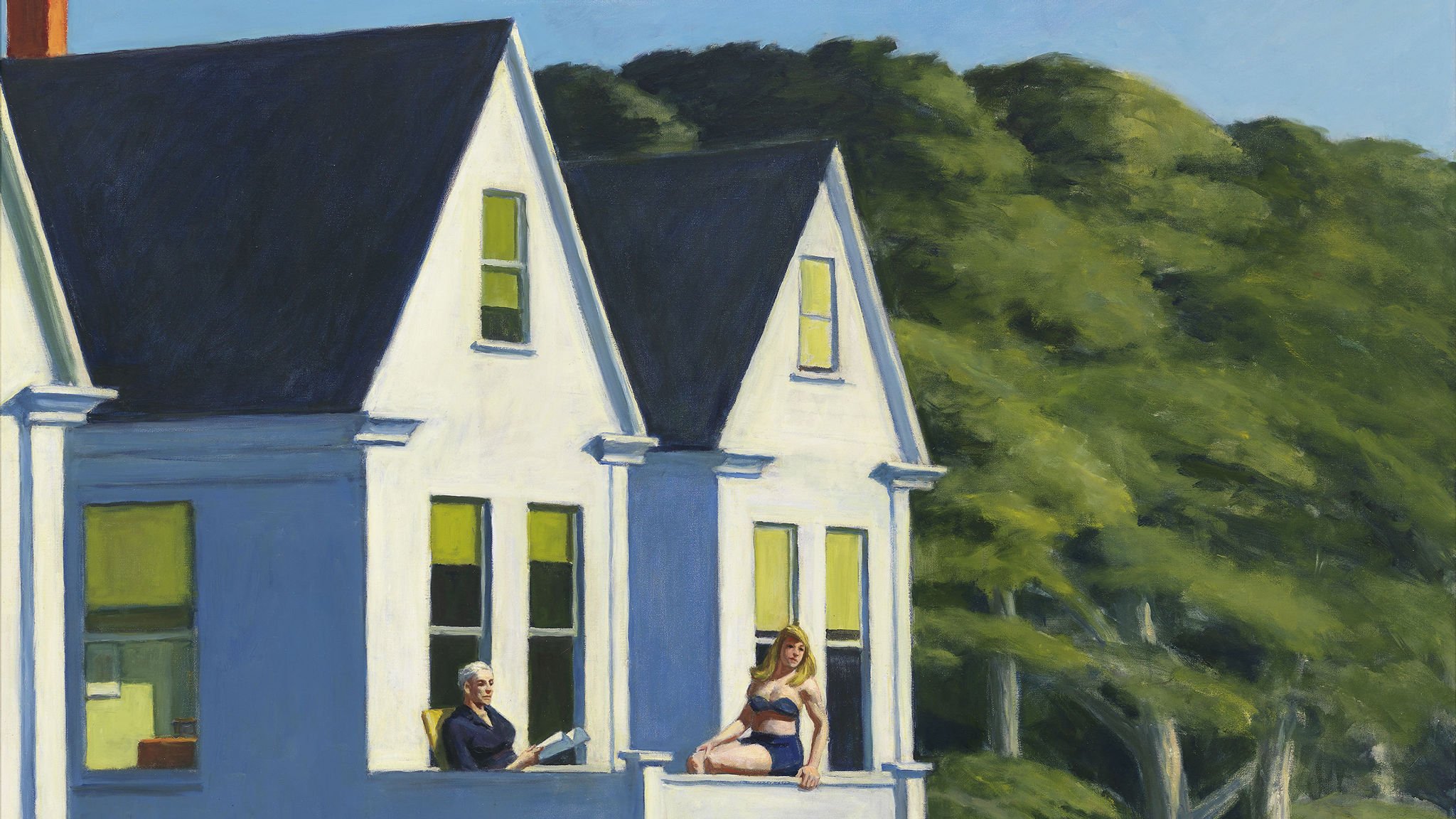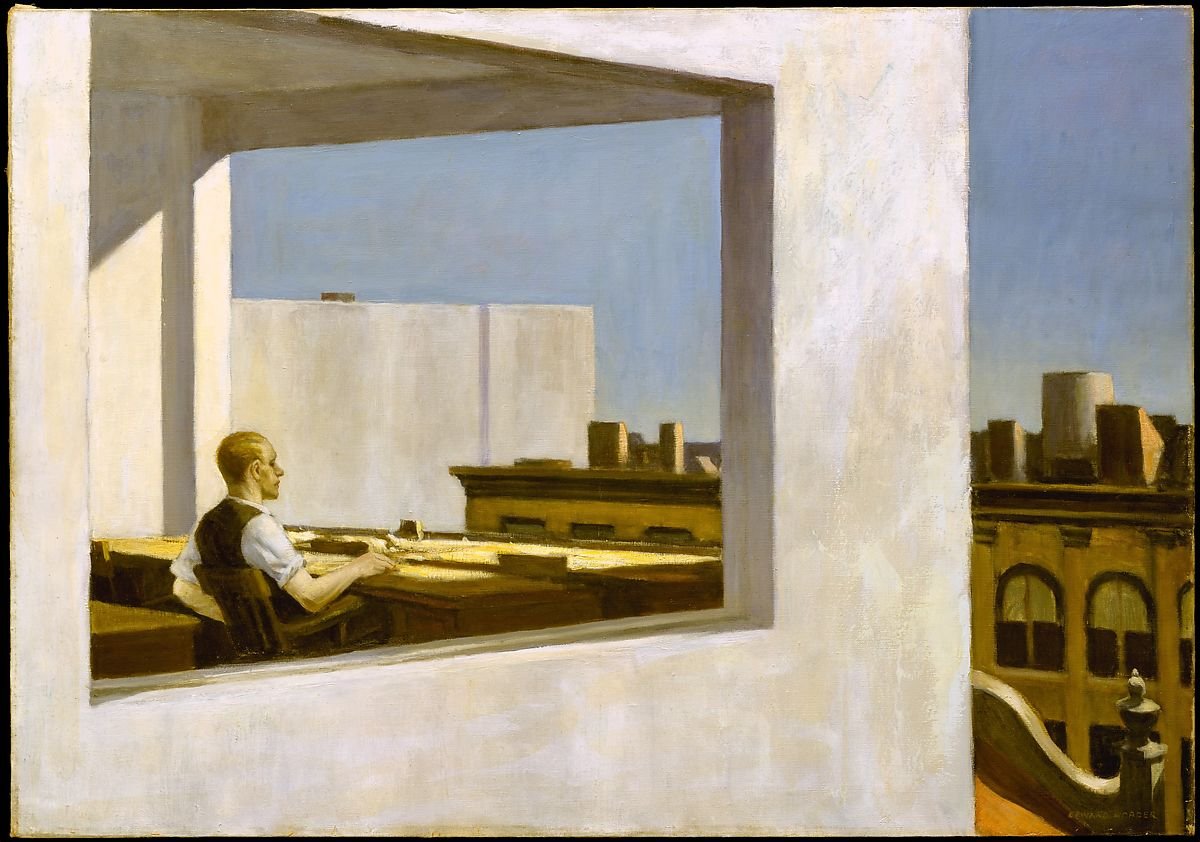An analysis of Edward Hopper
by Anna Wang
Edward Hopper was a master of American painting in the 20th century. In many of Hopper's works, he depicts the alienation and loneliness in the city. Hopper always focuses on those who bow their heads in silence: they are sitting in a cafe, a hotel room or a bed by the window. In the freeze-frame time, being alone, as if trapped in the black hole of endless contemplation and modern life. But... the painting called "Four Lane Road" goes against the tone and emotion of Hope's paintings. Why?
To some extand, his painting's content and structure are highly similar to other Hopper's works, but it gives the audience a completely different feeling because it have some novel details that are exclusive in this Hopper’s painting only. I will discuss its similarity and uniqueness in the following paragraphs using other Hopper's paintings as examples.
Firstly, like many of Edward Hopper's paintings, this painting's content reveals a trend of anti-urbanism. The man is resting on an armchair during the daytime, protruding half her body outside the window. Not far behind them lays two parallel roads. A petroleum refuelling machine sits quietly by the corner of the house, and through the transparent glass, we see a second one. The far scene of the pairing shows the landscape of trees and a blue sky. Without any trace of urbanism, it is not hard to imagine a gas station located in a rural area. No hint of human existence such as a car passing by, two figures are entirely on their own——which give out of a feeling of hiding in the rural, not excepting the transition to modern urbanism. However, they have to make a living under the grand trend. This painting is very similar to Edward Hopper's "Gas". A man is working at a gas station by the country road in the evening, surrounded by the forest and grass, completely alone. In Hopper's painting, suburban gas stations seem like a transition point, connecting people who want to flee the city with the city itself.
Moreover, this painting's structure was used in many of Edward Hopper's paintings too. This house in the image appears to be on its corner. The use of corners makes the scene more delicate. It is very likely the audience has seen a cabin before, but they had never observed a corner of the cabin. It is a process of " defamiliarization", where Hopper shows the commonly in a different way. Like in "Nighthawks", a new perspective presents an entirely new state of the tavern. Suppose we observe through the front glass. In that case, it is difficult for us to develop that kind of psychological implication—and thus, it would be difficult for audiences to understand the interweaving familiar yet unfamiliar relationship between the characters in the painting.
However, unlike other Edward Hopper's paintings, in which characters appear alienated in themselves completely, this particular painting has an apparent motion. For example, in "Room in New York", the man has their head down reading a newspaper, and the woman faces the opposite direction playing the piano. Besides the fact that they share a mutual living area, they have no real connection or communication. In "Sunlight on Brownstones", the man and the woman are standing at the porch, both staring at something far away, both holding thoughts to themselves, and audiences cannot imagine what happened or what is going to happen. No action is happening, and it does not have a sense of story. It is more like capturing an alienating moment. Whereas in this painting, the woman appears impatient. With her mouth wide open, she seems to be yelling at the man. However, the man remains looking at something far away, with his back towards the woman and a gentle smile on his face. We can see actions and imagine a storyline just through their impressions. It all looks pretty standard, even to some extent melodramatic. Not like any character in other paintings, this couple does not appear emotionally weak or isolated. Viewers can almost imagine arguing over little things in their lives, such as why he did not hang up his washing. Leaving viewers wondering what Hopper means to do. Maybe he wants to capture another sense of "edge". If the characters seem to be on the edge of themselves and the world in other paintings, this painting captures the last moment before falling to the edge. If we continue to develop along with the storylines we imagine, the couple will fight and eventually immerse themselves in their world. They are on the verge of being "marginalized".
In addition, contrary to the traditional way Hopper would build up the contrast, the light and dark relationship is relatively weak in this painting. In the famous painting "Nighthawks", characters sitting in the diner are under bright warm light, and behind them is an enormous window showing complete darkness. The building is viewed at an angle that makes the backside of the corner mysterious to the audience. In "Summer Evening", the contrast between light and darkness is also apparent, which adds to the loneliness of humanity. Even when the characters are having a conversation, their backs are directly toward the darkness, indicating their hearts are alone. There are always parts of the painting concealed under the night, making the characters more vulnerable.
Nevertheless, even the shadows appear grey instead of black, presenting a light tone and mood. Even though Hopper used a saturated hue in this painting, it no longer has a "dream realism" feeling. The characters no longer seem to be immersed in the dream that he just had but have forgotten the dream, returned to their daily lives and recovered an interactive relationship with each other. If other paintings depict the moment of "just woke up" since when we dream, things and people that seem real are not real, could this couple still be dreaming?
In conclusion, the painting has Hopper's style, but it is very different from other works. Although Hopper uses the same " defamiliarization " technique to capture corners and use suburban gas stations escaping the city's still-connected setting——This is by no means like any other work, depicting the abyss between man and himself, man and man, or man and nature. He chose to capture an emotional moment to show "how people fall to the edge", and therefore, moved me greatly after analyzing.




